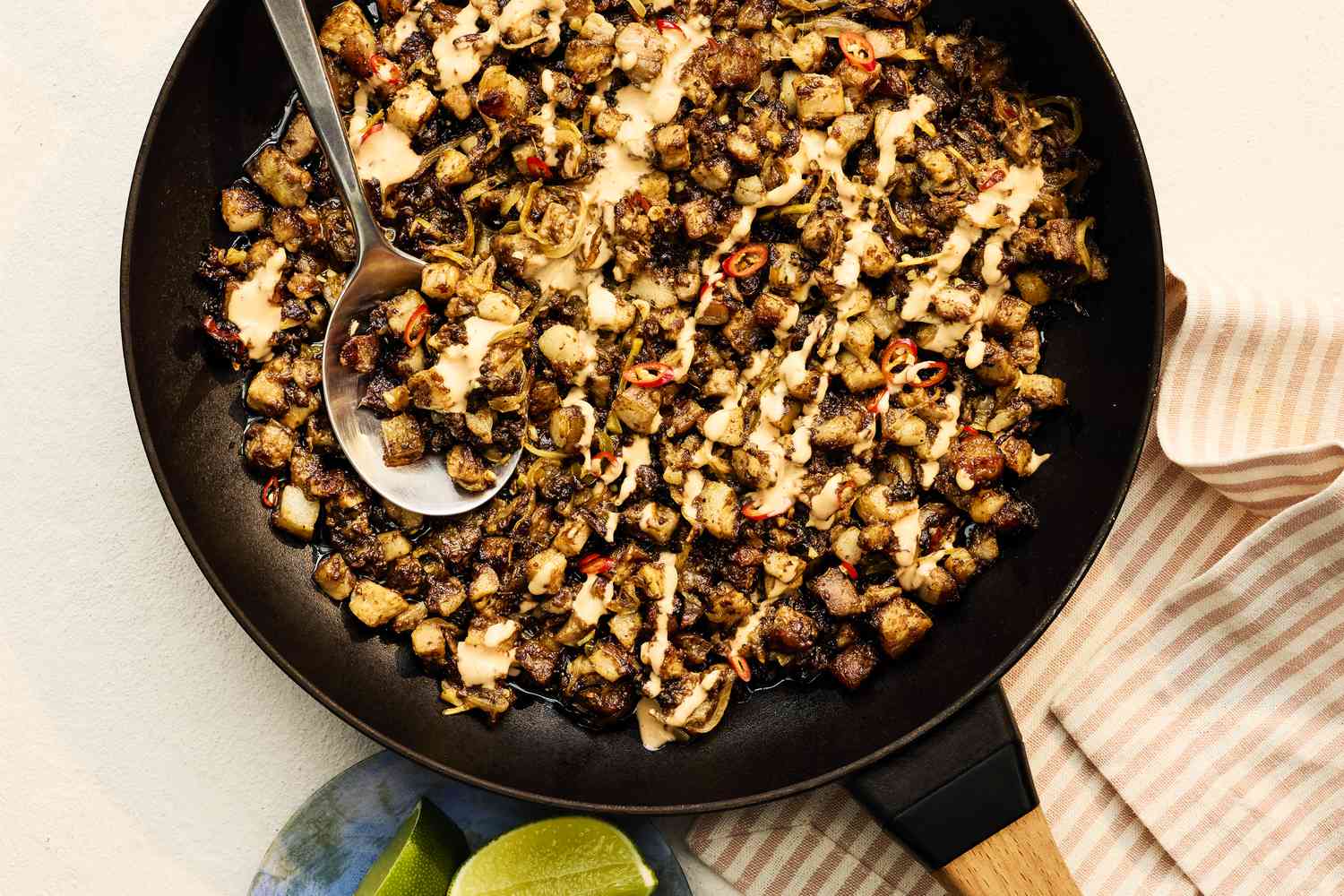There is no better sound in the dining room at Boonie’s in Chicago than Chef Joe Fontelera’s sizzling sisig headed to your table. The crisp, charred bits of savory pork belly sing while fragrant aromatics like garlic, fresh ginger, and spicy chilies waft through the air, whetting your palate for what’s to come.
Sisig, translating to “make sour,” is a meat dish said to have originated in Pampanga, the culinary capital of the Philippines. Sisig is a combination of savory, sweet, and tangy flavors, plus a touch of heat. The crispy bits of pork belly lend umami and a meaty richness, while the seared onions, garlic, and ginger add sweetness. The tangy, citrusy notes from lime juice or calamansi brighten the richer flavors of the dish.
Fontelera confesses that he didn’t try sisig until he was an adult. “Growing up as a Filipino in Chicago, I had a very limited exposure and understanding of what Filipino food is,” he says. “I thought I had a strong understanding of the cuisine just by virtue of being Filipino. Sisig sparked a curiosity in me to learn more about the cuisine, and I hope this dish inspires others to dig deeper into Filipino food.”
What is sisig?
Sisig is a dish from Pampanga in the Philippines that started as a vegetarian dish, originally made with sour seasoned banana flower, then was changed by locals near Clark Air Force Base to morph it into a catch-all dish that made use of various cuts of pork, including pork belly and off-cuts like cheeks, snouts, and ears. The meat is simmered in water, chopped into small pieces, and seasoned with aromatics like chilies and calamansi, a tangy citrus fruit native to the Philippines. When finished over high heat on a cast-iron griddle, the small pieces of pork crisp, locking in their savory flavor. To adapt this recipe for the home cook, this version does not call for pork off-cuts; instead, it makes pork belly the star.
Notes from the Food & Wine Test Kitchen
You can find ingredients like banana ketchup, Maggi seasoning, and fermented sugarcane vinegar (Datu Puti) at most Asian grocery stores or online. The dish gets its characteristic sour note from calamansi, or “Philippine lime,” but regular limes will also add the necessary tang.
Suggested pairing
A smooth, citrusy lager, like Brooklyn Brewery Brooklyn Lager, pairs well with this fragrant Filipino dish.
Make ahead
You can prepare and store several components of this dish in advance. All the vegetables can be chopped and stored in airtight containers in the refrigerator up to a day in advance. Cooked sisig meat should be stored in an airtight container without any added vegetables, Maggi, lime juice, or liver, and can last for three days. If you have already mixed the sisig meat with the other ingredients, it can be kept covered in an airtight container for up to one day. Make the sisig mayonnaise up to one day in advance.











